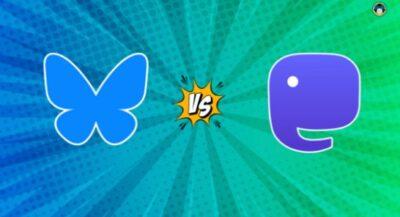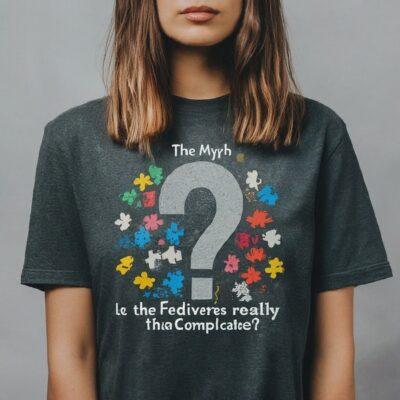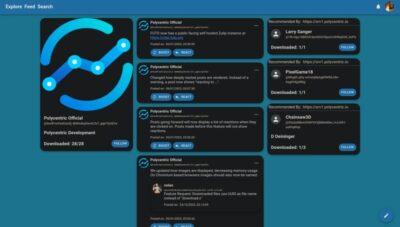3 Likes
1 Shares
In 2010, the US government secretly built a social network to destabilize Cuba -- allegedly. Actually, not one but two. Whenever I read stuff like this, I wonder what is going on now that I won't know about for 10 or 20 years.
"The existence of ZunZuneo and its ties to the US government only came to the American public's attention after the Associated Press published a bombshell story in April 2014. It detailed the true goal behind this planned infiltration with information technologies in the Communist country:"
"ZunZuneo's organizers wanted the social network to grow slowly to avoid detection by the Cuban government. Eventually, documents and interviews reveal, they hoped the network would reach critical mass so that dissidents could organize 'smart mobs' -- mass gatherings called at a moment's notice -- that could trigger political demonstrations, or 'renegotiate the balance of power between the state and society.'"
"After ZunZuneo was shut down, but before the existence of the social media network was made public by the AP in 2014, the US government launched a new network called Piramideo, or roughly 'pyramid' in English. This effort was more above-board in the sense that it was run through the Broadcasting Board of Governors, America's largest public-facing media outlet with a mandate to help spread American versions of truth and democracy around the world. Or, to put it more bluntly, the BBG was America's biggest foreign propaganda arm. A descendant of the Cold War's USIA, the BBG billed Piramideo as a network that, 'makes it easier for people to connect with each other, free from government control.'"
Relevant to the current discussion about whether TikTok can be used for political influence, or whether the Chinese government would attempt to use it that way. Interesting how what caused these social networks to fail is the same as what caused hundreds of others to fail: they just couldn't get popular enough for the positive network effects to kick in. TikTok has surpassed that hurdle.
Remember when the US secretly built a social network to destabilize Cuba?

Years before there was Mastodon and even ActivityPub, there was Mike Macgirvin who created the Zot protocol, which Hubzilla runs on. One of Hubzilla’s most amazing features (apart from also integrating with Activity and the Fediverse, and having channel relays) is also the nomadic identity that Mike envisioned.
Nomadic Identity is a concept pioneered by Mike Macgirvin, a longtime builder in the Fediverse. If you’ve ever used Friendica, Hubzilla, or Streams, you’ve used software written by this guy.
Nomadic identity is true portability of your identity, along with posts, followers, etc to a new location.
I’ve actually used nomadic identity when I hosted my own Hubzilla instance, and I moved my hosting to a different provider where I could not host my Hubzilla easily in a Docker environment. I resumed my Hubzilla on the secondary channel, and changed that to my primary channel. It just worked.
Hubzilla, with its Zot protocol, also allows for multiple channels on the same account (think of them as separate feeds each with its own profile) which can be used for work, home, a hobby, etc.
I’ll be really happy to see Mike applying his mind to improving ActivityPub as I know he had some fundamental principles which he got right, and which ActivityPub still needs. How, where, and when I don’t know as I remember Mike says way back, that is was easier to create the Zot protocol anew, than to change Friendica’s existing protocol.
Identity Management is one of those pieces of plumbing that’s surprisingly shaky still on ActivityPub but also across all social networks and requires serious consideration. For example, you also cannot migrate your identity from Facebook to say Tumblr at all. I know that Sir Tim Berners-Lee was also working on the same problem, with his POD identity being central for each person, but he has been busy on it for many years and there is no sign at all of any early adoption on any existing social network.
So, if Mike can retrofit his concepts into ActivityPub, then he will likely help cement an important new building block for the Fediverse and all its users.
See https://wedistribute.org/2024/03/activitypub-nomadic-identity/
#Blog, #activitypub, #nomadicidentity, #socialnetworks, #technology

Bluesky and Mastodon are two social media networks with an aim to provide a decentralized platform for users. As microblogging platforms, they also wanted to pitch themselves as a Twitter alternative (primarily) when they started.
Mastodon is one of the most-loved open-source social media platforms. But, what’s different with Bluesky?
Although they do similar things, and both can federate, there are some differences too. It’s important to also remember that the Mastodon social network is one of many social networks that all use the ActivityPub protocol, and those networks collectively are referred to as the Fediverse. Mastodon may be the biggest social network in the Fediverse, but the others offer other options such as long text format posts, nomadic identities, photo albums, etc.
See https://itsfoss.com/bluesky-vs-mastodon/
#Blog, #bluesky, #mastodon, #socialnetworks, #technology

Let me start out by saying how I think this myth became the reality for many… Obviously, a few journalists declared the Fediverse to be complicated, and this got picked up quickly by those who were considering whether to open accounts in the Fediverse (I’m not going to discuss journalists confusing Mastodon with being the actual Fediverse).
Most journalists were only really aware of Twitter, Facebook, Instagram, Reddit, etc for the reason that they were centralised, marketed/lobbied for by big companies who they knew, and the popular marketing blog sites shared posts only to these sites. Change is terrifying for many people (yes, I know some thrive on change like a drug) and what is worse for a popular journalist with tens of thousands of followers on Twitter, to start somewhere new with zero followers, and no algorithm to boost them. They’d start out on an equal footing with the likes of you and me.
The second part of the reason has more to do with existing users of the Fediverse (me included). I’ve always been of the opinion I should give a good overview along with the context of what/why something is done. Because the Fediverse can be full of options and choices, this can be too complex. We tried explaining it was no more complicated than choosing an e-mail service provider, and then mailing someone at a different e-mail domain (assuming e-mail was understood by journalists and average users). This was just wrong on our part as we were mixing apples and oranges in the eyes of some journalists.
Users coming from a legacy centralised service like Twitter have one set of Twitter’s rules, one moderation team who rules for/against you, who can ban you forever, everyone has a plain Twitter handle, and everything works the same way.
So, what should we have done? Well, I think it should go something more like this:
* We recommend a single instance to sign up at, either knowing the person may have a particular interest, or we recommend the biggest instance, or maybe one representing their country. That’s one place to go, sign up, complete a profile, and start posting.
* They won’t have an algorithm to fill their feed, so they should use the search for finding favourite hobbies and people they know, and follow those.
* A user can reshare, like, bookmark, or reply to any post they see, just like they are already used to.
* If there are posts they don’t like, or which offends them, they can mute, block or report the user, or they can even block the entire domain (instance).
* They install a mobile app and connect by specifying the site’s URL, with their ID and password to authenticate.
* User shares their profile elsewhere with @username@server.
And that’s where it should have ended. Nothing is cast in stone so a user can later migrate to another instance or one of the other social networks in the Fediverse. The only real difference to a centralised network, is that the username handle also includes the server URL where they signed up for the Fediverse. If we ignore all the contextual background as to how the Fediverse works, a normal user’s browsing and posting experience is much the same as anywhere else.
Decentralisation and federation (even peer to peer) are really exciting, and do offer some real benefits, but maybe that is not at all important for most prospective users. It’s true too that user culture does differ between all social networks, and if a prospective user is a ham radio operator, then I’d recommend up front they join the main ham radio Mastodon instance, or if they identify as LGBTQ+ there are LGBTQ+ friendly instances, or if from South Africa I’d recommend they start out at Mastodon dot Africa, etc.
If we want to tout any benefits, then they really need to also be kept short and simple:
* No adverts can be pushed into your feed
* You see just the posts for profiles or hashtags that you follow
* If you don’t like the rules of your instance, you can migrate elsewhere and still keep your followers
* From where you are, you can find and follow anyone on a different Fediverse server
* You have 500 (depending on which instance) characters per post
* Many different servers means the whole network cannot just be censored
* Can do polls
* Auto translation
* Etc
Journalism is a real power for good, but if the subject matter is not thoroughly and objectively understood, it can also muddy the waters…
Image credit: Google Gemini
#Blog, #fediverse, #socialnetworks, #technology

“Twitterrific was our flagship app, and by far earned the most of any of our pieces of software we’ve produced. Its loss is still being felt revenue-wise to this day. We’re hopeful that Tapestry will help us regain some of that ground and help us keep our company healthy, doing the things we love to do — developing great, friendly and useful apps for iOS and macOS.”
The linked article though is quite interesting in what it reveals from all of this. When you consider both Twitter and Reddit did this to their users and 3rd party devs, there is a trend towards these more private centralised social networks to have restrictions in the way of 3rd party access. Whilst on the decentralised social networks the trend tends to be using an open protocol, and usually also supporting open RSS feeds.
So, Tapestry is tapping into this more open ecosystem: “This isn’t really a social media client directly in the mold of Twitterrific; instead, it’s a single place to view online stuff that matters, and it mostly uses open standards like ActivityPub and RSS. Luckily for them, they’ve already reached their $100,000 minimum funding goal.”
Its intention is not to replace any existing clients, although with all the decentralised social networks I’ve been involved with, their devs all openly encourage having different 3rd party client apps.
But it’s what is not directly stated in the linked article that concerns me the most, and I’ve heard others also echoing this sentiment, especially some journalists who have “jumped ship” from Twitter to Mastodon and other networks. The issue is around quality content creation, especially news. It’s not that there is no such news on the decentralised social networks, it’s that there are still too many mainstream news services, journalists, and governments stuck fast on Twitter, Reddit, etc. So many users are also just stuck in their bubble in the same places.
We do really need to see that final seismic shift across to embracing an open and decentralised social network ecosystem. Certainly, the Fediverse, built on the ActivityPub protocol, is not the only option out there, but it is an open standard endorsed social network and has gained a lot of content and user traction.
The way I understand Tapestry, is that it would not only help provide an integrated (single) view of the Fediverse (yes most existing ActivityPub apps can also do that), but it can also seamlessly include discovering and following content from Bluesky, and many others, including potentially even Nostr (via RSS feeds).
So, Tapestry may help provide some cohesion and single view that many users and content creators, who are still stuck on Twitter, Reddit, etc, seem to crave/demand. Many such users are actually caught up in indecision over “where must I pick to move to”. With something like Tapestry, that fear may disappear, and for creators such as news and governments they would be more easily “found and followed” through one single app like Tapestry.
Will it happen? I think so as the vast majority of users are often solely content consumers, and whilst it is true that to develop a high-quality app from the ground up takes cash, Iconfactory does have that experience and they have raised over US$100,000 to fund their app development.
Who knows, I’d expect this app to even go further, and start to support likes and comments for some of the networks it integrates with over time.
See https://digg.com/internet-culture/link/iconfactory-tapestry-mastodon-rss-interview-Twitterrific
#Blog, #RSS, #socialnetworks, #Tapestry, #technology, #Twitterrific

I’ve not done an in-depth look at this network but reading through their documentation shows it has a lot of similarity to the basics of the Nostr protocol and network. There is just not as much information available on the Polycentric site as there is already for Nostr. Nostr is also censorship resistant, with distributed relays doing the relaying of posts (Polycentric calls them servers). Both use public-private key cryptography, with every post being cryptographically signed. Both networks also have the ownership of the identity managed by the end client (no-one can delete a client on either network), and those profiles can be used across devices.
And whilst basic posting looks very similar (microblogging type format, and is limited to 280 characters) this is also where the differences lie. Nostr has likes, whilst Polycentric only shows boosts (reshares) and reactions through commenting.
The Nostr protocol is also an extensible one, which means it has new NEP standards added by various people to go way beyond just blog posts. So, it also already provides full length text posts (like Minds uses), events, link aggregation, and more.
Polycentric servers have a moderation API control built-in (non-recommendation vs non-storage) whilst Nostr does not have this, and it is left to individuals to block or mute a profile. But the recommendation feed is a nice touch on Polycentric to help new users find recommended content. Both networks allow anyone to host these servers/relays.
But if privacy and censorship resistant networks are what you’re into, then both Polycentric and Nostr are worth having a look at.
See https://docs.polycentric.io/
#Blog, #privacy, #socialnetworks, #technology

Long before Facebook existed, or even before the Internet, there was Usenet. Usenet was the first social network. Now, with Google Groups abandoning Usenet, this oldest of all social networks is doomed to disappear.
These days, Usenet’s content is almost entirely spam, but in its day, Usenet was everything that Twitter and Reddit would become and more.
These messages, also known as articles or posts, were submitted to topic categories, which became known as newsgroups. Within those groups, messages were bound together in threads and sub-threads.
Much of the vocabulary we use today to talk about using the net springs from Usenet. Frequently Asked Questions (FAQ) files, for example, started on Usenet as summaries of information about a newsgroup, so the members wouldn’t need to repeat the basics for newcomers. Flame and flame war, for instance, also started on Usenet.
In many ways, Usenet is a warning about how social networks can go bad. All the same, problems we see today on social networks appeared first on Usenet.
It is really not all unique to Usenet, though. Usenet, like most networks, was better in the beginning, but as more and more masses arrive, moderation is required to keep things civil and on track. As the moderators also move on, some groups/channels devolve into cesspits. All social networks seem to go through these lifecycle stages. And, of course, many people also move onto new networks.
What is fascinating is to see whether older networks have any potential for resuscitation. Can those who really care, if there are enough of them, revive it and rejuvenate the network? I’ve not really seen any old network come in any big way. Yes, Myspace is still around, but it is nothing like it was, and you don’t hear much about it at all. Back in the day, users often went to Usenet and IRC for technical support, but most of the tech organisations today moved to mainstream social networks.
I’m thinking more and more that a massive decentralised federation of networks is more the way to go today. Individual networks can come and go, but the overall federation continues onwards as far as the bigger picture goes.
With centralised individual social networks, their users live or die by the existence of that one network and whatever rules it applies. Usenet is decentralised, and probably explains why it is still around today. Today we all watch the slow demise of a “modern” social network such as X-Twitter.
You can still connect to Usenet today by using Mozilla’s Thunderbird E-mail client. The linked post does suggest some Usenet providers to try for accounts.
See https://www.zdnet.com/article/the-rise-and-fall-of-usenet-how-the-original-social-media-platform-came-to-be/
#Blog, #socialnetworks, #technology, #Usenet